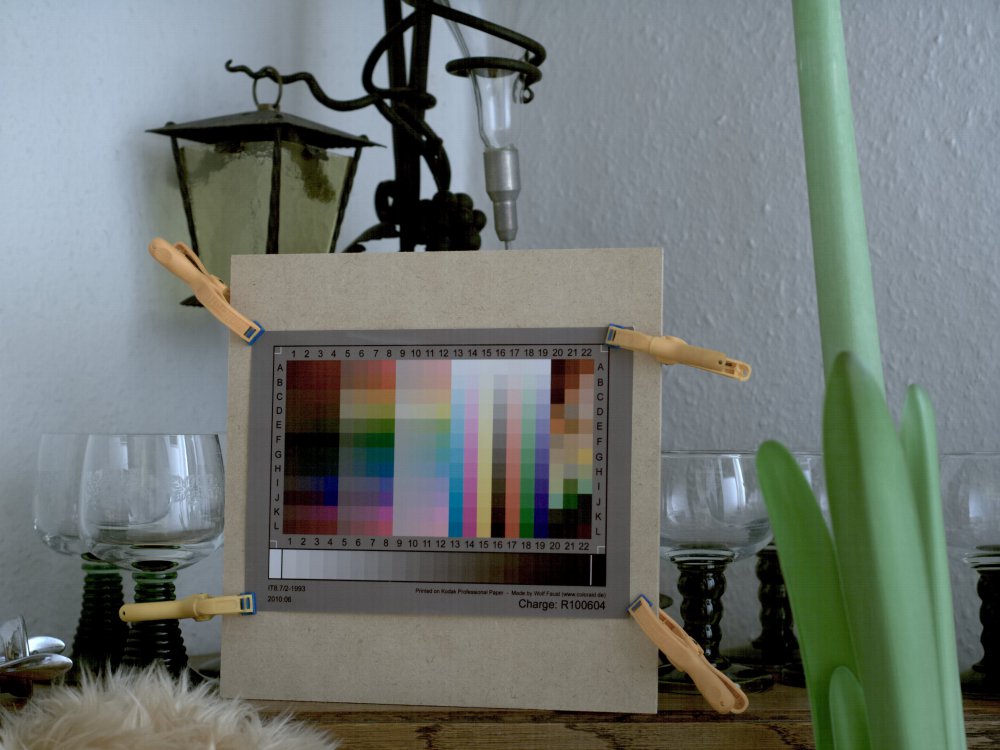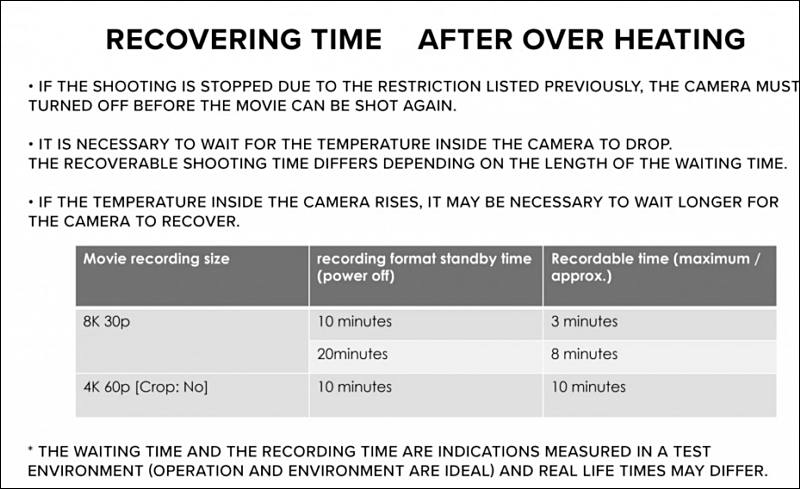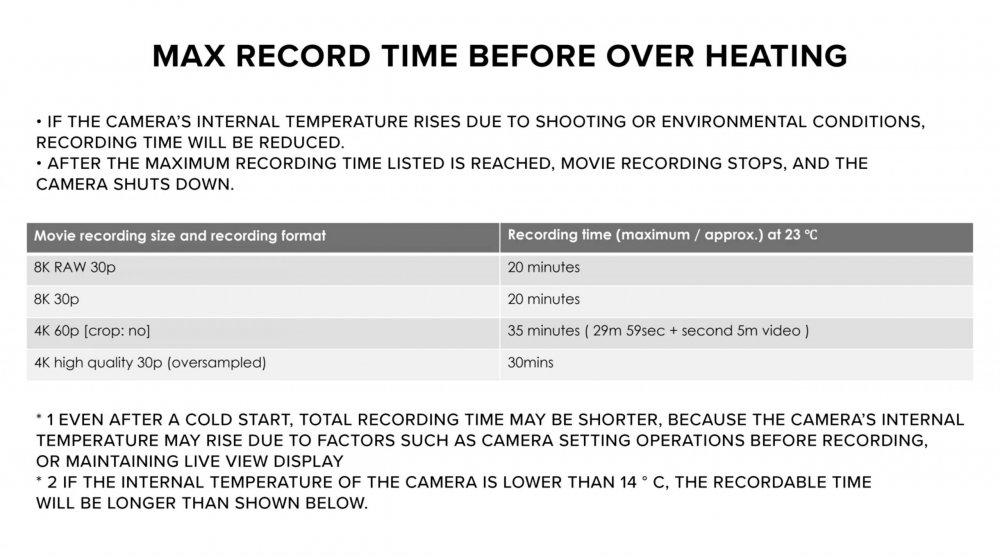-
Posts
321 -
Joined
-
Last visited
Content Type
Profiles
Forums
Articles
Posts posted by rawshooter
-
-
On 7/10/2020 at 10:41 PM, Super8 said:
Steve raves about the FP.
He tested it one day after it came out, and only as a still camera for adapted manual rangefinder lenses with its more Instagram-y color profiles.
Which resulted in the Sigma fp having basically two user bases: CinemaDNG video shooters, and the vintage lens + stylized camera profile stills photo crowd.
But I think of him as just another industry shill and paid influencer.
-
9 hours ago, TiiPii said:
The statement from Sigma wrt. firmware 2.0 that Log is not possible in Sigma FP platform is really confusing because we know that it *can* apply curves to the raw signal from the sensor. That’s what all those different color modes are, just a curve.
It's not just that. A proper log profile also has a wider color gamut. If your log curve remains within Rec709, it won't make much sense (and will cause color banding when translated into non-logarithmic Rec709).
It looks as if Sigma has been unable to implement a wider color gamut with its current camera hardware/ASIC. So it was sensible of them to pull the promise (rather than delivering just a Rec709 profile with a log gamma).
-
Thanks! And another question: which software did you use to record the raw image sequence/video? raspiraw?
I wonder whether I should contact the PyDNG developer and ask whether PyDNG could be extended to extract DNG sequences.
-
The likely reason is that Canon design and manufactures its own chips/electronics, and that its chip technology is old and not on the level of contemporary chip manufacturing of 14nm or less.
Bigger structures/more nanometers mean: less power efficiency, more heat production. (That's why smartphones, using the latest and smallest chip technology, are so incredibly powerful at low electricity consumption and low heat dissipation.)
Panasonic, as much bigger electronics manufacturer, has access to more modern chip technology. They likely also manufacture the electronics of the Sigma fp (since they also manufacture the electronics of Leica cameras, and since the fp uses a Panasonic battery).
This is also the reason why Canon's self-manufactured sensor chip are behind in performance to Sony's.
- Kisaha and Amazeballs
-
 2
2
-
2 minutes ago, Anaconda_ said:
It's multiple. I have found a viewer for it and can see the different frames, but there's no way to export it at all from the viewer. For now, I've stopped the quest for raw as finishing the physical build seems more important - though, that's also on hold for now too.
What is the viewer that you use?
-
On 5/26/2020 at 10:46 PM, Anaconda_ said:
The .rgb file is raw data. I'd love to work out how to view this in a coherent way - or convert it into DNG frames.
[...]
https://www.dropbox.com/sh/seddezwwymwnh4v/AAAU5es-RCWOXCj1Fpkbz3Dba?dl=0
I'm wondering - did you shoot multiple frames/raw video, or just a single frame?
PyDNG is able to extract a single DNG from your files (whether it's the .yuv or.rgb files), which looks like this when converted to JPEG in a Raw Converter (I used RawTherapee, with white balance correction and slight noise filtering):
-
1 minute ago, Andrew Reid said:
The Sigma Fp records internal RAW and is the size of 2 decks of cards!
Yeah, but it can't do oversampled 4K... 😉
Perfect FF hybrid video camera isn't there yet.
-
2 hours ago, Django said:
@ade towell There are two ways of looking at this, glass half-empty or half-full. Andrew made a good post about this: https://www.eoshd.com/8k/a-closer-look-at-the-canon-eos-r5-lower-quality-4k-mode-to-avoid-thermal-cut-off/
R5/R6 can be used without overheating issues. If you want maximum performance (which no other hybrid camera can currently give you) well you are prone to thermal cut off limits and high RS.
But that's actually not true - other cameras such as the Panasonic S1H record oversampled 10bit 4:2:2 Full Frame 4K without any thermal issues.
You basically got three options now:
1) Sony A7iii: oversampled 4K, but only 8bit, passive cooling
2) Panasonic: oversampled 4K, 10bit, with active cooling
3) Canon: 4k 10bit, but only with line-skipping/binning if you want continuous recording, passive cooling + "turbo" or "burst" modes with overheating issues
-
6 hours ago, Matt James Smith ? said:
You literally have no idea what you're talking about! I've already answered all your questions but you keep flogging a dead horse. You must have very little experience of shooting interviews.
Not only that. He's systematically bullshitting this forum in all his postings, doesn't know what he's talking about and obviously has none of the practical experience he claims to have.
It's becoming toxic because people google this forum for answers, and he's contaminating it with misinformation.
The biggest fraud who has been on this forum since Ebrahim Saadawi - unless he's the same person.
-
-
19 minutes ago, Emanuel said:
I'd say taking their 23 degrees remark, it is prone to variably help I believe. It is worthy... I don't know if you've already realized there's no other similar camera for under more than a few 5 digits...
Really? What about the Sigma fp for under 2000, or the Panasonic S1H with external Raw?!?
-
8 minutes ago, Super8 said:
No interview is going to be stuck on the subject for 30 minutes straight. You always have a second camera capturing a different angle. The work around for the R5 recording limit is not that hard to do.
It's not even 20 minutes. And subtract the time where the camera is being set up, tested, focus-pulled etc. And if have a second camera capturing different angles, then it will switch off after 20 minutes, too - and you would have to wait almost an hour until both cameras are sufficiently cooled down to record another 20 minutes. If you turn on the second camera later to get more time, you won't have double coverage for the beginning of your recording.
A multi-cam setup even escalates the problem. And you don't want to let your interviewee wait because the camera needs a break of one hour.
-
The R5 is destined to become a b- or crash cam - but maybe not even that, because rigging it up in, let's say, a stunt car and then running out of time during the shoot because of its recording limit (and its general heat sensitivity) is not something that film productions will want to deal with.
In order to use it productively on a set or documentary/event shoot, you'd actually need 3-4 R5 bodies for quick swapping each time one of them has overheated (and to give the others enough time to completely cool off, which according to Canon's info sheet should be about one hour; maybe even bring a camping coolbox or small fridge to cool them down efficiently). -
16 minutes ago, hijodeibn said:
I am sure we will see a lot of this kind of solution over the internet in the next weeks, a dedicated cage with one or two fans is on its way for sure.
This won't really help since the heat is trapped inside the body of the camera - and unlike a typical computer/case fan, such a fan can't blow the hot air out of the camera body.
You'd need to do some serious body modifications (i.e. drill holes into the camera's housing) to install an active cooling system.
- And another issue: Even before the camera shuts down from overheating, internal temperature will rise and potentially degrade the image (since sensors produce more image noise when their operating temperature increases). When recording raw, this becomes much more visible than with conventional video codecs in prosumer cameras where the cameras use black shading and noise filtering to compensate this effect. Because of this, practically all raw video cameras have strong (in most cases: active) cooling systems.Well, at least we now know why Canon and RED weren't worried that the R5 and the RED Komodo (which uses a lot of Canon technology including the lens mount and DPAF) would cannibalize each other.
-
-
25 minutes ago, Super8 said:
4 minutes ago, Super8 said:
We will need to see just how sensitive the over heating issue is. How those record times are in the real world.
Well, Canon writes that you will get more than 20 minutes only when the internal temperature of the camera is lower than 14 degrees Celsius - that's 57 degrees Fahrenheit. Unless one shoots in Alaska or at the North Pole (or in a refrigerator), that's unlikely to happen.
It even seems as if the 23 degrees Celsius/74 degrees Celsius refer to the camera's internal operating temperature - then your real-life recording time will likely be much shorter than 20 minutes.
-
2 minutes ago, Super8 said:
Hopefully it's not as bad as this thread and reaction make it out to be.
Have you actually read the article, with the data sheet published by Canon?
Just to recall - @Andrew Reid republished this in the article:
-
Well, the first camera made to combat climate change, since you'll even only get those twenty minutes recording time when outside temperatures are no more than 23 degree Celsius / 73.4 degree Fahrenheit.... Imagine the whole world buying it - then people will have a personal reason and urgency of fighting global warming.... (The plot thickens... Was this camera thought up by Greenpeace....?)
-
The situation is likely to be much worse in reality, since those numbers refer to an operating temperature of 23 degree Celsius - that's 73.4 Fahrenheit, the temperature of mild Northern American/Middle European climate or an air-conditioned room.
In summer, in regions like Southern Europe, California, South America, Africa, much of Asia, or any place with subtropical or tropical climate, I guess you can completely forget about shooting RAW video outdoors with this camera.
-
Well, the news about the R5 overheating when recording RAW doesn't come to a surprise, doesn't it? In the initial thread about the camera, we said exactly that - that it either needs some never heard-of, science fiction electronic technology or an active cooling system in order not to overheat when recording 8K.
Here's the old thread:
Money quote from that posting: "I see forums littered with phrases like "Canon take my money!" Really? Not only have we not seen the full specs. No one has been able to test the camera. Something seems fishy to me."
And here:
By the way, do we have any info on the rolling shutter of the R5? With that high sensor resolution, I wouldn't hold my breath about that one either.
We really need to wait till the dust settles, propaganda noise from the industry-paid YouTube influencers has faded, and there is real-life experience with the camera.
(A crucial part of info is how long the camera will need in order to cool off after those 20 minutes. It's not just that it needs to cool to to safe temperatures, but it will need to cool off thoroughly and to such a degree that it won't shut down again after 5 or 10 minutes.)
-
IMHO you nailed it, @Andrew Reid - Nikon is going down the route of Olympus. Nobody is going to buy into the Z system except owners of Nikon SLR AF lenses, and that won't be enough to keep the company alive as a camera manufacturer. Nikon already makes more than 60% of its revenue with industrial and medical imaging. I wouldn't be surprised if they spin off the imaging division at some point, after which it will die sooner or later.
- Andrew Reid and Eno
-
 2
2
-
1 hour ago, Vintage Jimothy said:
Really hope Fuji provide a similar update to the X-T4 (and maybe the X-T3 too) for it to be able to output ProRes RAW externally as they just did with the GFX100 sometime in the near future... assuming it's possible, of course.
It wouldn't really be possible or make sense, since the X-T3 and X-T4 have sensors with X-Trans (instead of Bayer) filter patterns. Neither Resolve, nor any other video software would be able to process that material.
And even if you added X-Trans support to all those programs, it wouldn't be practical because demosaicing X-Trans is a computationally much more demanding process and would result in terrible playback performance.
-
-
ProRes is factually a derivative of MPEG-2, that's why it's so light on CPUs. It compensates its old codec technology through high bitrates, thus the generally good quality.
h264 and h265 will always be better than ProRes at the same bitrates, provided that a decent codec implementation (with high profile and 10bit color depth) is being used.So the question is whether 400 Mbit/s h265 (in the case of the Fuji XT-4) for 4K/25p video is visually as good as ProRes HQ at 737 Mbit/s for the same resolution and frame rate...
EDIT: The real issue with h264 and h265 are not the codecs themselves, but that manufacturers - treating them as consumer codecs - bake all kinds of overdone image processing (aggressive denoising, artificial sharpening, pushed contrasts) into material recorded with them. ProRes, being conversely treated as a "pro" codec, doesn't get those over-processed images. This is why we think that ProRes is better...
- Mark Romero 2, Geoff CB, KnightsFan and 1 other
-
 4
4










Sigma Fp review and interview / Cinema DNG RAW
In: Cameras
Posted
In raw. But the h264 encoded .mov files are limited to Rec709. A log profile would only apply to h264/.mov.